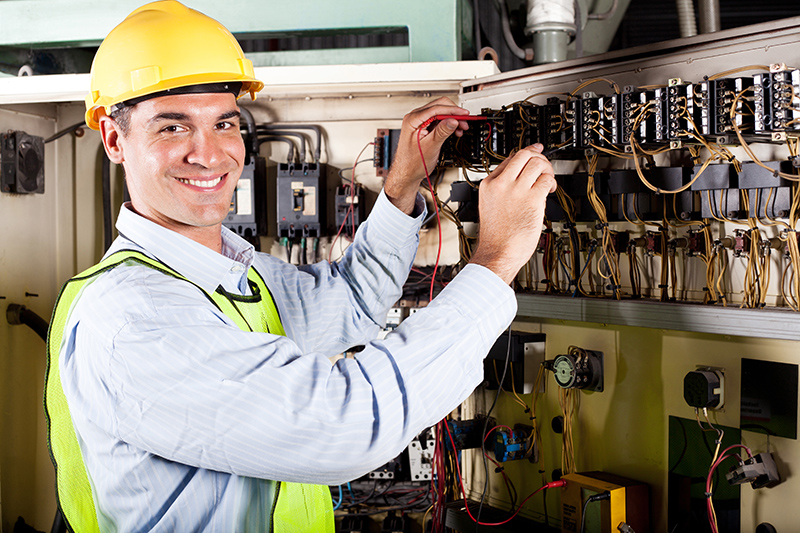You should want peace of mind that your property is safe and up to standard. Electrical safety checks give you that confidence by catching hidden risks before they become emergencies. Whether you’re a homeowner or a landlord you’ll find that regular inspections are more than a legal box-tick—they’re your best defence against costly surprises, so if you are looking for electricians Hertforshire way or anywhere else in the UK, never hesitate to reach out for their expertise.
Choosing A Qualified Electrician For Safety Checks
You will notice when you start calling around that qualifications in electrical safety make your life easier. Electricians in the UK need proper registration—think NICEIC, NAPIT, or ELECSA. These badges do more than sit pretty on business cards. You might see someone waving paperwork but, unless the credentials check out, your peace of mind evaporates like mist after rain. Have you checked their Part P certification If you’re dealing with domestic properties, Part P is fundamental so look for it before you sign anything.
You will find that experience counts for more than just years on the job. Someone who’s handled period properties, modern flats, offices—you name it—will spot trouble that would pass right under the next person’s nose. Always ask, what kind of safety checks have they done before You’d be surprised how many don’t go beyond the basics. More than ticking boxes, a sharp electrician can explain why that warm socket could set the stage for chaos or why your old consumer unit groans under today’s tech load.
It’s always tempting to grab the lowest quote but here’s where you pause. You should weigh up transparency in pricing. Does your electrician send over a quote with every detail lined out or are you left wondering if there’s a catch lurking in the shadows You might ask for references and when you do, pay attention—real experience leaves footprints. People will talk if the job stuck or if a revisit was needed weeks down the line.
You might sense confidence in their manner or lag in their answers during a chat so trust that instinct. There’s a reason credentials and reviews add up to something you can lean on. Your property’s quirks require an electrician who can see below the surface—does yours survey hidden cabling or just glance at sockets?
Don’t forget tools. You’ll spot pros using calibrated testers and thermal cameras, whereas a poorly equipped one checks fuses by guesswork. That meticulous approach mirrors how you protect your family every day. Have you watched for their adherence to safety standards in every step Your insurance and property compliance both ride on those little details.
Components Of An Electrical Safety Check
You might expect electrical safety checks to feel much like a guided tour beneath the surface of your property’s wiring. You can follow each pulse and flicker to discover where things could go awry. Walk through these checks and you’ll discover layers of risk and reassurance knitted together with every wire and socket.
Inspection Of Wiring And Outlets
If you glance at an outlet, basic as it might seem, you’ll spot the start of a journey. Wires snake behind walls, disappearing into the bones of your home where problems lurk unseen. Your electrician will probe for cracks in the story—scorch marks on outlets, tightness of connections, faded colours clinging to insulation. What’s hiding in sockets you hardly use? Sometimes a faint warmth means wires have begun to loosen after years of silent flexing. Ask yourself when you last checked for chips or wobbly sockets you just live with. Does every outlet grip securely? Your check will touch surfaces then reach deeply, using thermal imaging or circuit testers. In the case that an outlet has a smoky scent, you might need urgent intervention.
Checking Electrical Appliances
You will find that appliances, perched on kitchen counters or tucked beneath desks, often play their own games with safety. Plugs blackened around the prongs warn that something’s brewing. PAT testing tools might trace each lead and cable, telling you whether your kettle or iron flirts with overloads or poor grounding. Who thinks to question a lamp’s plug? Yet, that’s where frayed wires peek out. Inspectors should test each core device from fridge to charger, pulling back covers and using continuity testers where needed. If your appliances are ten years old or more, you’re facing added risk. Listen for buzzing, watch for lights dimming, and let expertise guide which mains-powered items pass inspection.
Assessment Of Circuit Breakers And Fuses
You might approach your fuse box, curious whether order reigns or chaos creeps behind the metal door. Labels faded, switches sticky or stiff, the checklist is anything but brief. Circuit breakers—silent sentinels—carry tales in their ability to trip or endure sudden surges. Push each one, see if it snaps back sharp and strong. Is there visible dust or corrosion huddling around connections? It can signal age or water has encroached. Fuses—old and glassy—do they fit tightly or rattle loose? Your check should seek out mismatched amperages, any heat discolouration, and confirm RCDs click when tested. If your circuit trips during testing, your system’s telling you something you shouldn’t ignore. How long since you pressed that test button?
And Lastly
Prioritising electrical safety checks is an investment in your property’s wellbeing and your own peace of mind. By staying vigilant and choosing qualified professionals you reduce the risk of unexpected hazards and costly emergencies.
Don’t wait for warning signs to escalate. Regular inspections and a proactive approach ensure your home or rental remains safe compliant and resilient against electrical risks. Your attentiveness today could prevent serious issues tomorrow.

